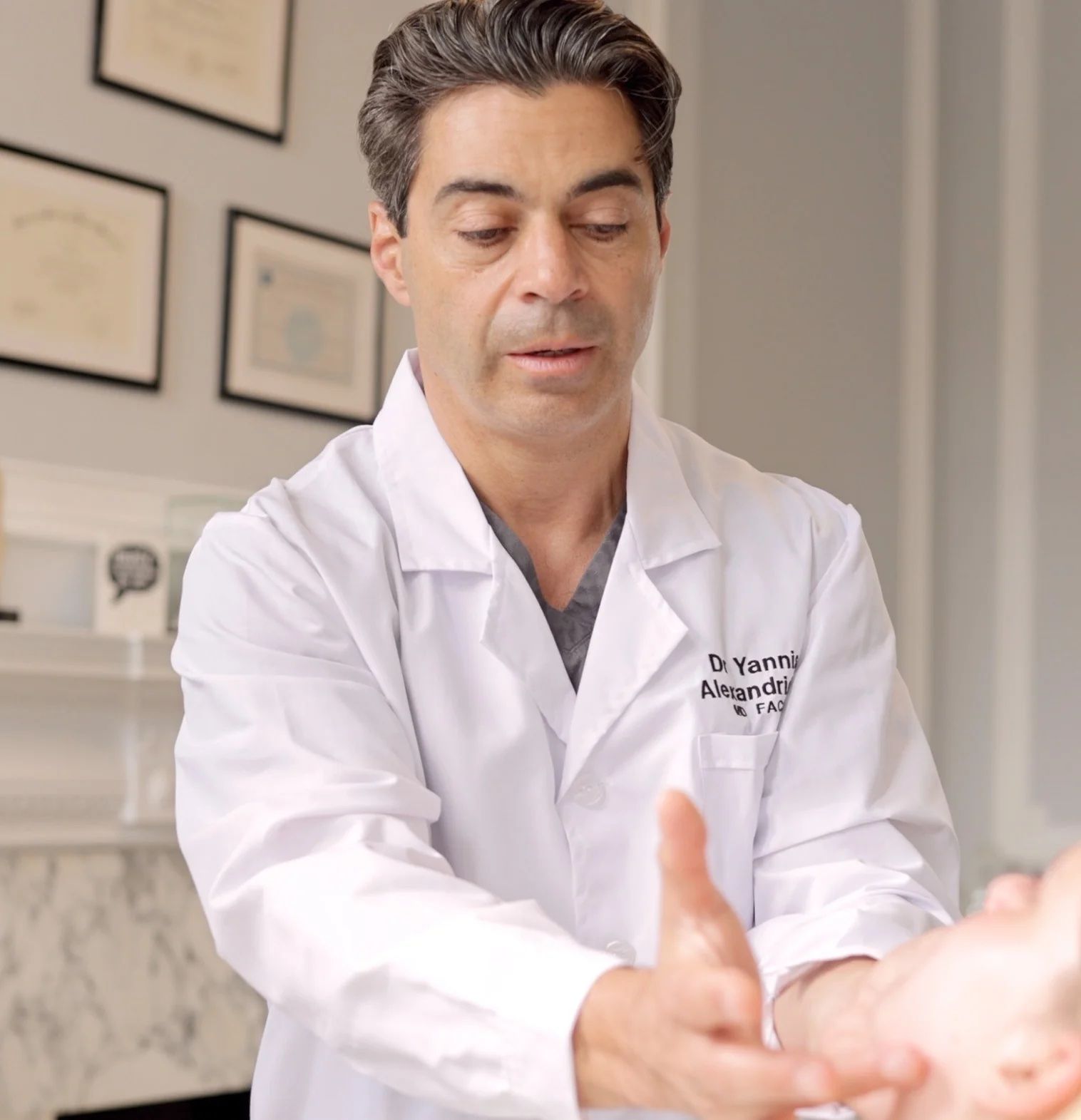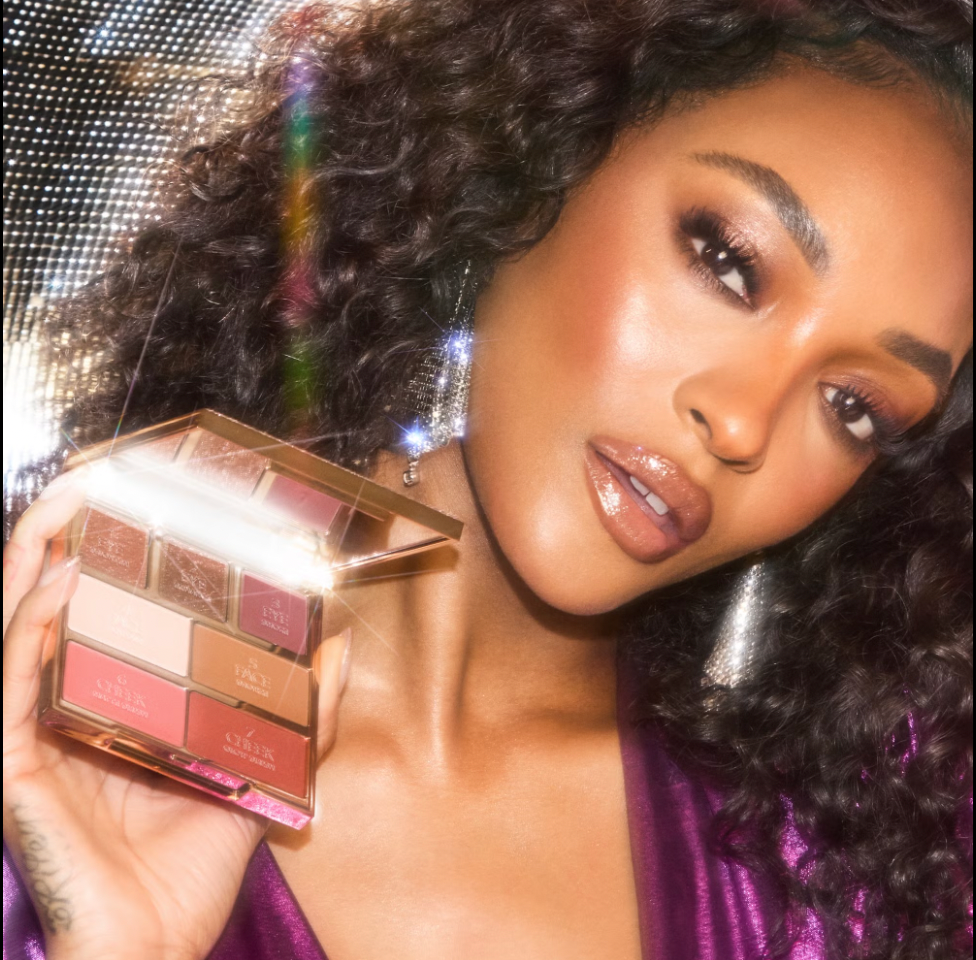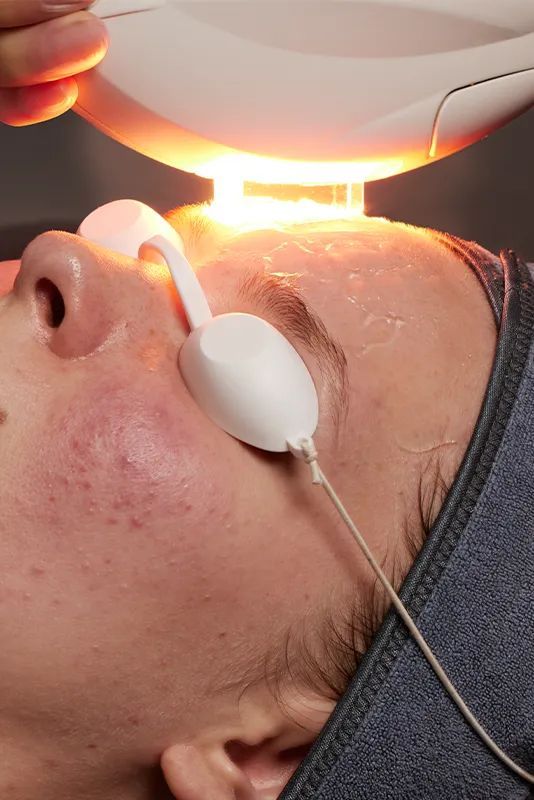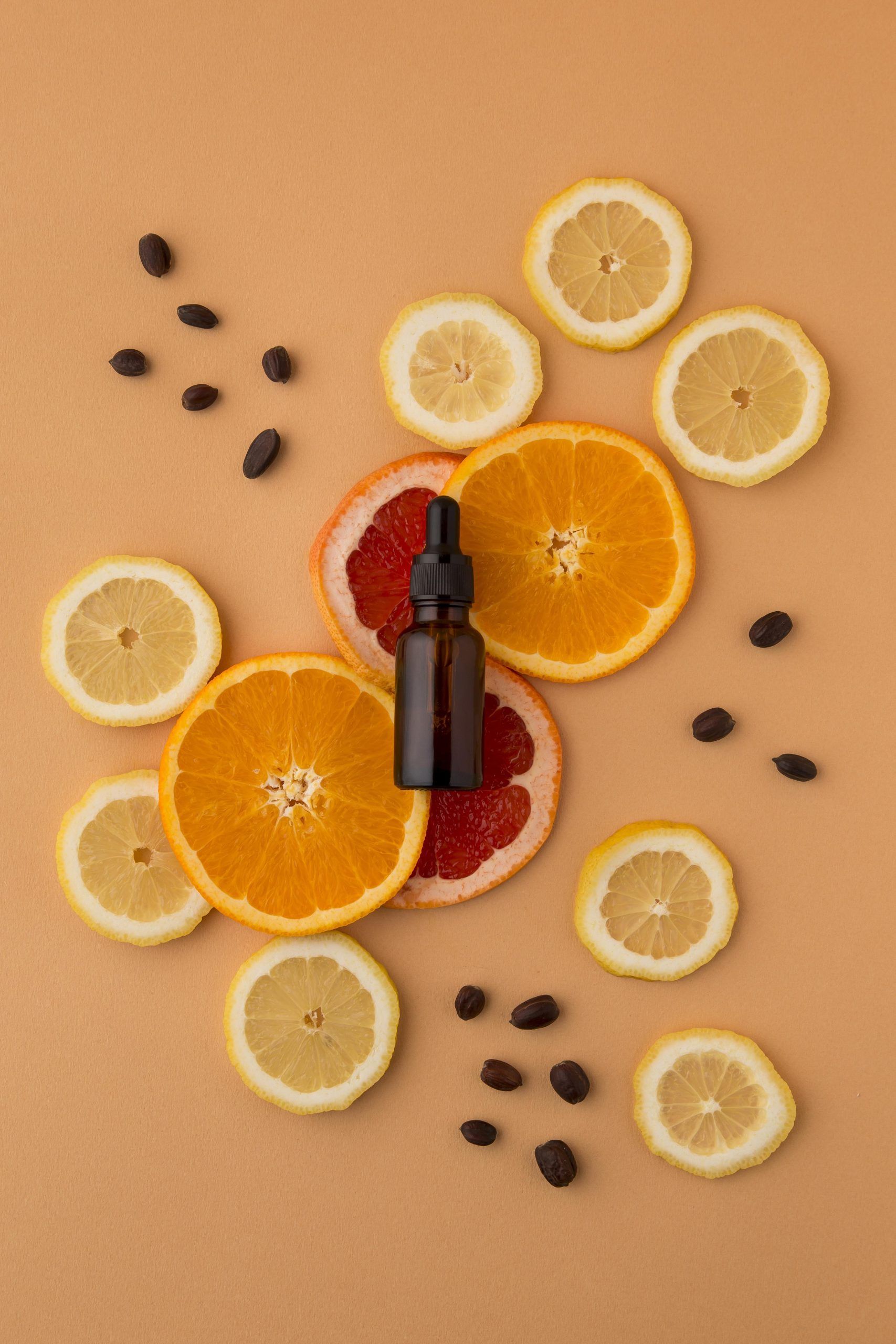In a beauty landscape where trends shift faster than your Instagram feed, Dr Yannis Alexandrides stands out for his blend of surgical precision and forward-thinking approach. The founder of 111 Harley St. and luxury skincare brand 111SKIN recently sat down for an intimate Q&A hosted by journalist and former HELLO! Beauty Director Charlotte Jolly, sharing his insights on where aesthetics is heading next.
From facial fat transfer to the role of LED masks and the enduring value of tretinoin, here’s what we learned about what’s next in modern beauty.
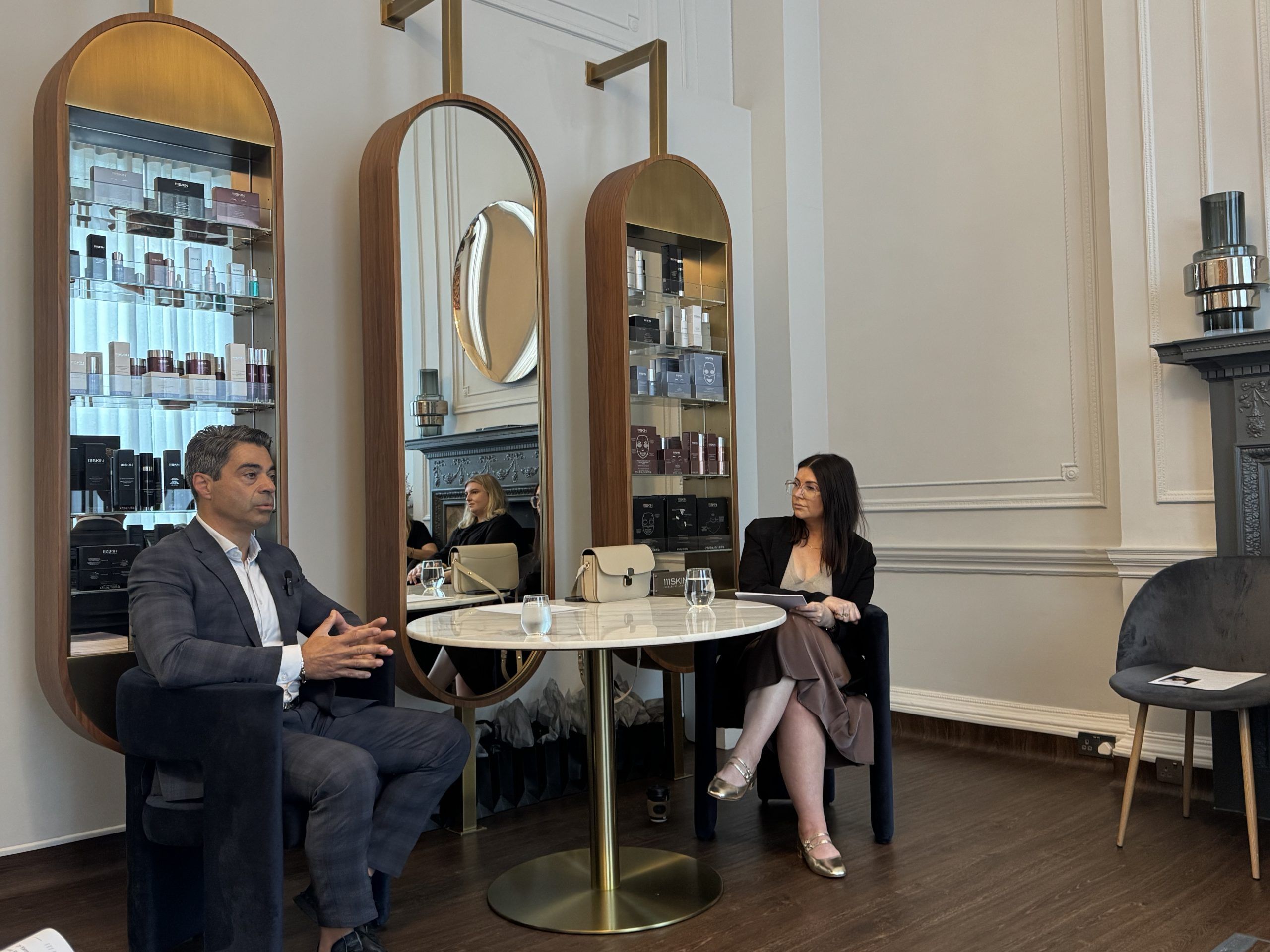
Fat Transfer Is the New Filler
Forget what you think you know about fillers; facial fat transfer (or micrografting, if you want to get technical) is fast becoming the procedure of choice for those seeking natural volume. Dr Yannis has noticed a clear shift, patients are increasingly drawn to this technique as a more sustainable alternative to repeated filler appointments.
The concept is beautifully simple: your own fat, typically harvested from the abdomen or thighs (or behind the knees for particularly slim patients), is carefully transferred to areas of the face that need volume. It’s a 90-minute procedure with some inevitable swelling and the odd bruise, but the payoff is significant. Results take about three months to fully settle, but unlike fillers, they’re built to last.
What makes this particularly compelling isn’t just the longevit, it’s the biology. Fat contains stem cells, which means you’re not just adding volume; you’re improving skin tone and texture from within. It’s regenerative in a way that synthetic fillers simply can’t match.
Unlike the maintenance cycle of traditional fillers, fat transfer offers something more harmonious and enduring. It allows for the kind of refined, customisable facial contouring that can be seamlessly integrated with other procedures for a more complete transformation.
You’re using your own tissue, that’s incredibly powerful, not just aesthetically but biologically.
Rethinking Facial Balance with Lip and Brow Lifts
Two procedures also gaining traction among patients looking for natural rejuvenation are lip lifts and brow lifts. As Dr Yannis noted, overfilled lips are out. Instead, people are increasingly turning to lip lifts for a more structured, elegant result.
A lip lift shortens the philtrum (the space between the upper lip and the nose), lifting the lip into a youthful, fuller shape and accentuating the cupid’s bow. Unlike fillers, the results are permanent and avoid the often disproportionate look of repeated volumising.
When it comes to the upper face, brow lifts are an alternative to blepharoplasty (eyelid surgery), especially for patients looking to refresh the upper third of the face without removing skin. Dr Yannis performs a minimally invasive endoscopic brow lift, a technique that repositions the brow and restores lost volume without extensive scarring. This approach lifts and supports tissue to correct drooping and soften forehead lines.
The goal isn’t to make everything tight or lifted, it’s to bring harmony back to the face.
Blepharoplasty vs. Brow Lift: Which One Should You Choose?
While blepharoplasty remains one of the most performed facial surgeries, targeting sagging upper eyelids and under-eye bags, it’s not always the only or best choice. Dr Yannis explained that many patients opt for a brow lift instead or in combination to achieve more subtle rejuvenation.
Blepharoplasty involves removing excess skin, fat, and sometimes muscle from around the eyes to create a refreshed appearance. It’s especially effective for patients with heavy lids or under-eye puffiness. Brow lifts, on the other hand, lift the forehead and brow line, which indirectly rejuvenates the eye area and provides additional lift to the upper face.
Facelifts Are Getting Smarter
Facelifts have come a long way since their overly tight predecessors. Dr Yannis, renowned for pioneering the Y Facelift and the Deep Plane Facelift, explained how these techniques have become smarter, more natural, and more nuanced.
The Y Facelift targets the lower face and neck in a simultaneous lift, addressing sagging jowls and restoring jawline definition. Inspired by the shape of the letter ‘Y’, the arms represent the jawline while the tail symbolises the neck. This makes it ideal for both younger patients wanting early intervention and those seeking a more defined silhouette.
The Deep Plane Facelift, meanwhile, goes beneath the SMAS (Superficial Musculo-Aponeurotic System) layer to reposition deeper facial tissues rather than simply pulling skin tighter. This technique offers a longer-lasting, more natural look, especially effective for patients in their 50s and beyond. It avoids the ‘pulled’ appearance by enhancing volume and repositioning fat pads and muscles.
Dr Yannis also noted that celebrities like Kris Jenner have contributed to the renewed popularity of facelifts. “People are no longer afraid to say they’ve had one,” he added, “which helps demystify and destigmatise surgical options.”

Patients considering surgery should also be selective with non-surgical tweakments beforehand. Dermal fillers, radiofrequency treatments, and even excessive supplement intake can compromise outcomes if not managed appropriately. Dr Yannis advises discontinuing supplements three months prior to surgery and avoiding energy-based treatments that might affect tissue.
What Works, What Doesn’t, Dr Yannis’ Take
In a rapid-fire round, Dr Yannis shared his takes on some of the most popular treatments and tools in aesthetics:
- LED masks: Yes, but only if powerful enough and used daily for at least 20 minutes.
- Tretinoin: Yes, but it requires commitment; irritation is normal, results take time. Other types of actives might be more suitable for some patients.
- Slugging: Only useful in specific cases (e.g. very dry skin). Can clog pores in acne-prone skin.
- Putting ice on your face: Cryotherapy has benefits, but doing it at home can be risky; you could burn the skin or apply it unevenly.
- Collagen supplements: Probably no harm, but choose wisely. The supplements industry is unregulated and not all products are effective. Plus, ingested collagen won’t necessarily target the face, your body will prioritise where it’s needed.
- Collagen banking: Start early. A consistent skincare routine is one of the best ways to maintain collagen long-term, and it’s never too early to begin — even in your teens.
In a beauty landscape full of noise, hype, and conflicting advice, Dr Yannis’ approach stands out for its honesty and research-backed perspective. Whether he’s weighing up the merits of collagen supplements, explaining the nuances of fat transfer, or cautioning against overdoing tweakments, his philosophy is refreshingly clear: invest in evidence-based treatments, think long-term, and never underestimate the power of a tailored approach.

